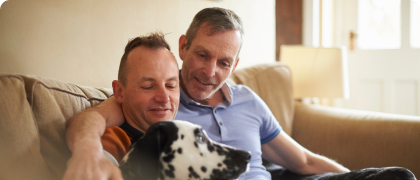Published: 1 April 2025
Stamp Duty Land Tax (also known as stamp duty, or SDLT) is a tax you may have to pay when you buy a property (or land) in England and Northern Ireland. If you’re buying a property in Scotland, the Land and Buildings Transaction Tax applies and in Wales, it is the Land Transaction Tax.
This article will focus on Stamp Duty Land Tax only. 
How much stamp duty you pay depends on the price of the property you’re buying. Stamp duty is paid for both freehold, leasehold properties or if land or property is transferred in exchange for payment.
Also, stamp duty usually doesn’t apply if the property is:
• A gift (with no outstanding mortgage on the property), or left to you in a Will
• Being transferred as part of a divorce, separation or the end of a civil partnership
It is also worth noting that:
- If joint owners are unmarried and not in a civil partnership and if they transfer an interest in land or property from one joint owner to another then Stamp Duty Land Tax may apply.
- There are also different rules which apply to shared ownership property.
If you’re looking at purchasing a property it’s worth seeking independent tax advice for your situation to understand the likely taxes that will apply and the costs.
Do you pay stamp duty on a house you sell?
No - stamp duty is only paid by the person/people buying the property, not the person selling it. So, if you’re putting your current home up for sale, stamp duty charges won’t apply. But you might have to pay stamp duty if you’re buying another property.
Is stamp duty changing in 2025?
Yes, the rules have now changed for stamp duty, as of 1 April 2025.
This includes changes to residential properties, where you own only one property, as follows:
- The 0% threshold (meaning there is no SDLT to pay) has reduced to £125,000. It was previously £250,000.
- Stamp duty relief for first time buyers will reduce. This means there is no SDLT to pay up to £300,000. This was previously £425,000.
- The first-time buyer relief can now only be claimed on properties purchased for £500,000 or less. This was previously £625,000.

How much is stamp duty?
There are different "bands" when paying stamp duty. The amount you’ll have to pay depends on how much the property costs, and whether you’re a first time buyer or an existing homeowner. This will also depend on whether you own more than one home, whether the property is for residential or buy to let purposes and whether you’re buying it as an individual or a Limited Company.
Residential property rates are:
| Property price | Stamp duty rate | Stamp duty rate for first time buyers |
|---|---|---|
| £0-£125,000 | 0% | 0% |
| £125,001-£250,000 | 2% | 0% |
| £250,000-£300,000 | 5% | 0% |
| £300,001-£925,000 | 5% | 5% |
| £925,001-£1.5m | 10% | 10% |
| £1.5m+ | 12% | 12% |
The rates are for the purchase of a single residential property, if the purchase means that you will own more than one home then there is usually an additional 5% on top of the rates.
Remember, stamp duty is paid at the rate of tax for each band that the purchase price falls within. So, not a single % for the whole amount.
For example, if you buy a house for £295,000, the stamp duty you owe would be calculated as follows:
• 0% on the first £125,000 = 0
• 2% on the next £125,000 = £2,500
• 5% on the next £45,000 = £2,250
So, the total stamp duty to pay in this example would be £4,750.
The stamp duty thresholds can be changed by the government at any time. It is your responsibility to check that you have up to date information and work out the correct stamp duty payment. 
Do first time buyers pay stamp duty?
Yes, first time buyers pay stamp duty but can qualify for first time buyer relief – this depends on the selling price of the property.
As of April 1, 2025, first time buyers pay:
- 0% on the first £300,000 (previously £425,000)
- 5% on the portion between £300,001 and £500,000
If the property you want to buy costs over £500,000 (previously £625,000) – you’ll then pay the standard stamp duty rates.
When do you pay stamp duty?
You’ll need to pay stamp duty to HMRC within 14 days of buying a property (or land). So, just make sure you submit a Stamp Duty Land Tax return. If the SDLT isn’t submitted within 14 days, HMRC can add interest to the payment and charge you a late payment penalty.
How is my stamp duty paid?
Usually, your solicitor or conveyancer will determine the amount to be paid and manage this for you including any paperwork – always check this is case as it’s your responsibility to ensure everything’s paid on time.
Can you add stamp duty to a mortgage?
You can’t add stamp duty directly to your mortgage, but you could borrow more to cover the cost. But bear in mind this will increase your overall loan amount and monthly mortgage repayments.
This guide is not to be taken as advice. You should seek independent financial or legal advice if needed.



